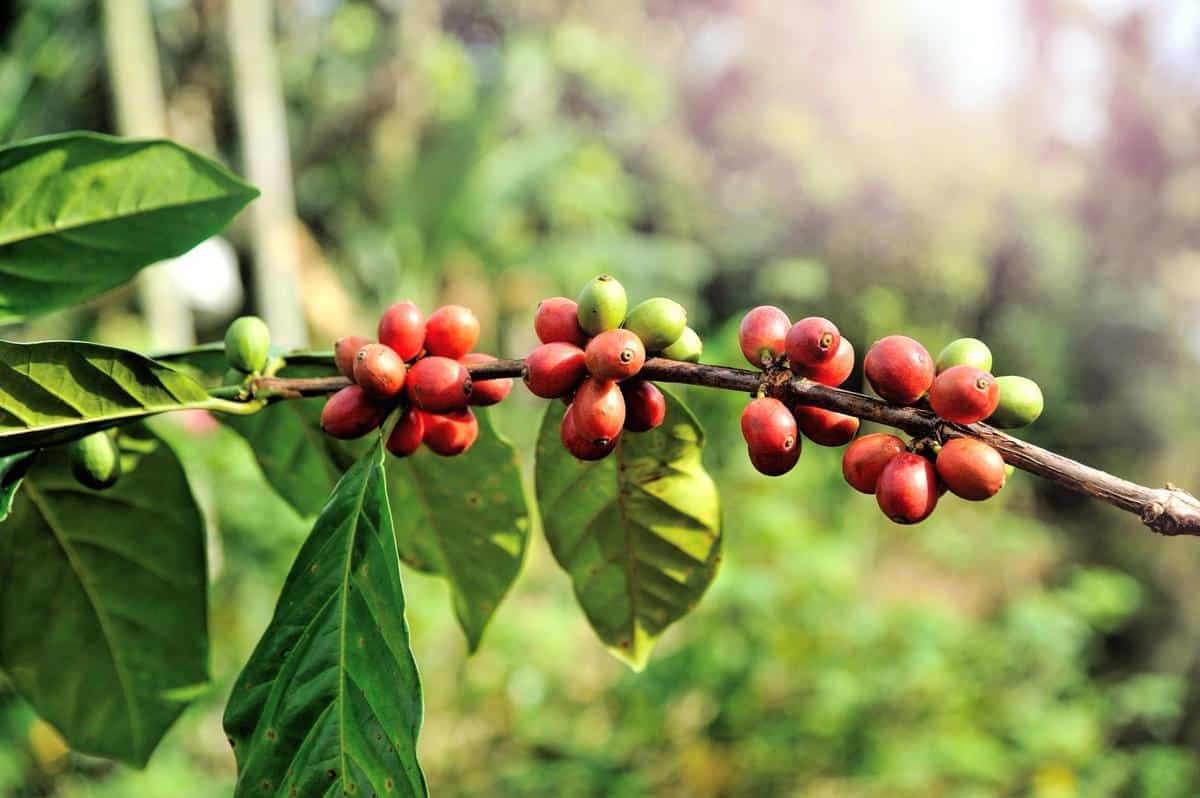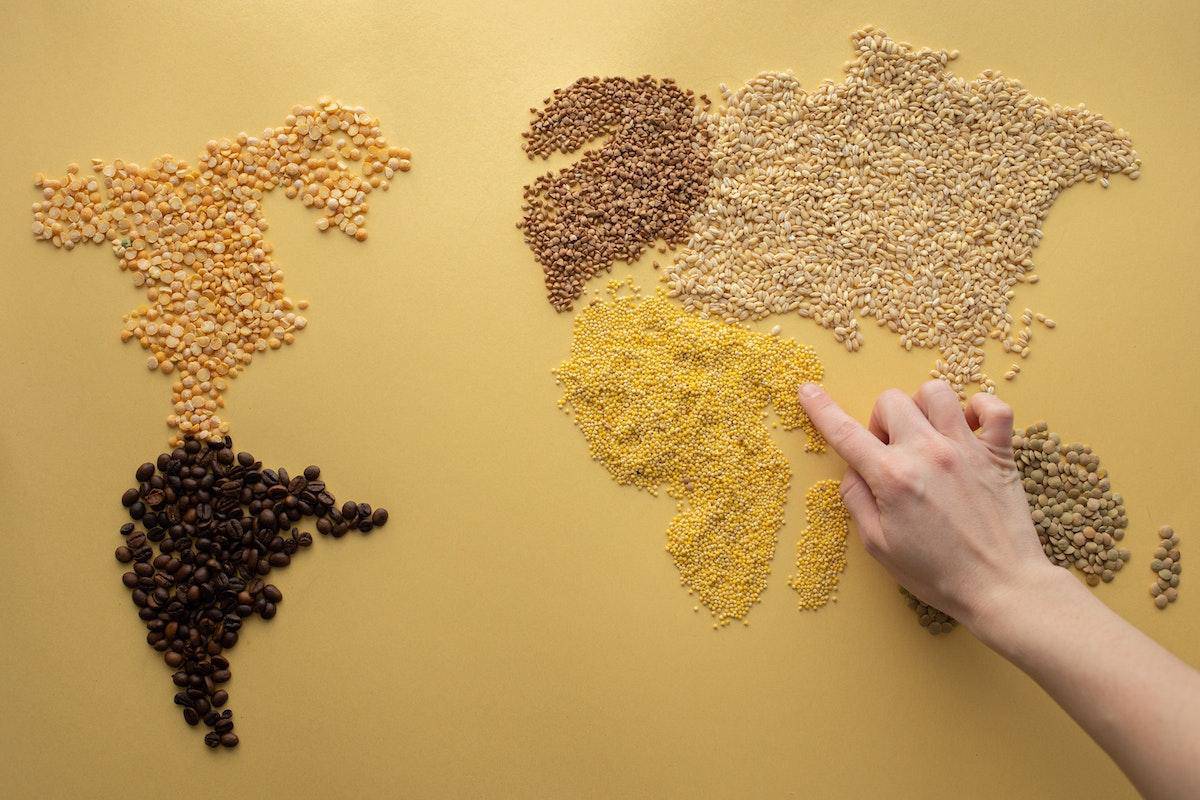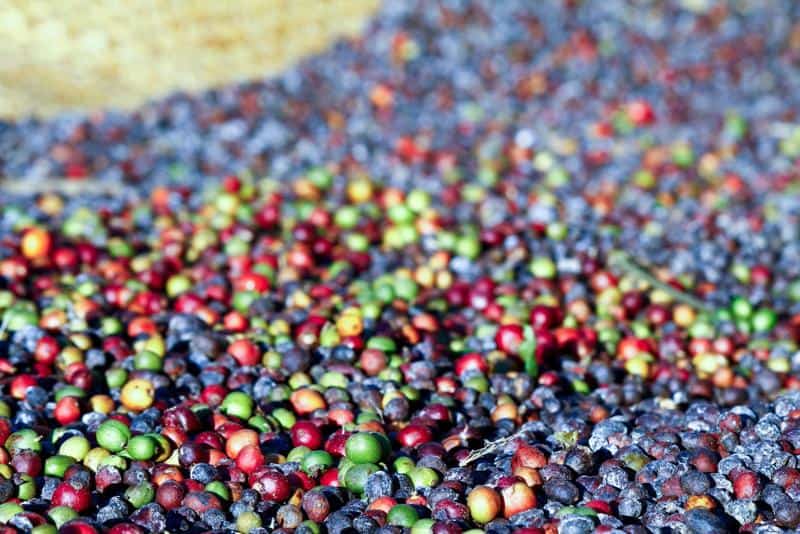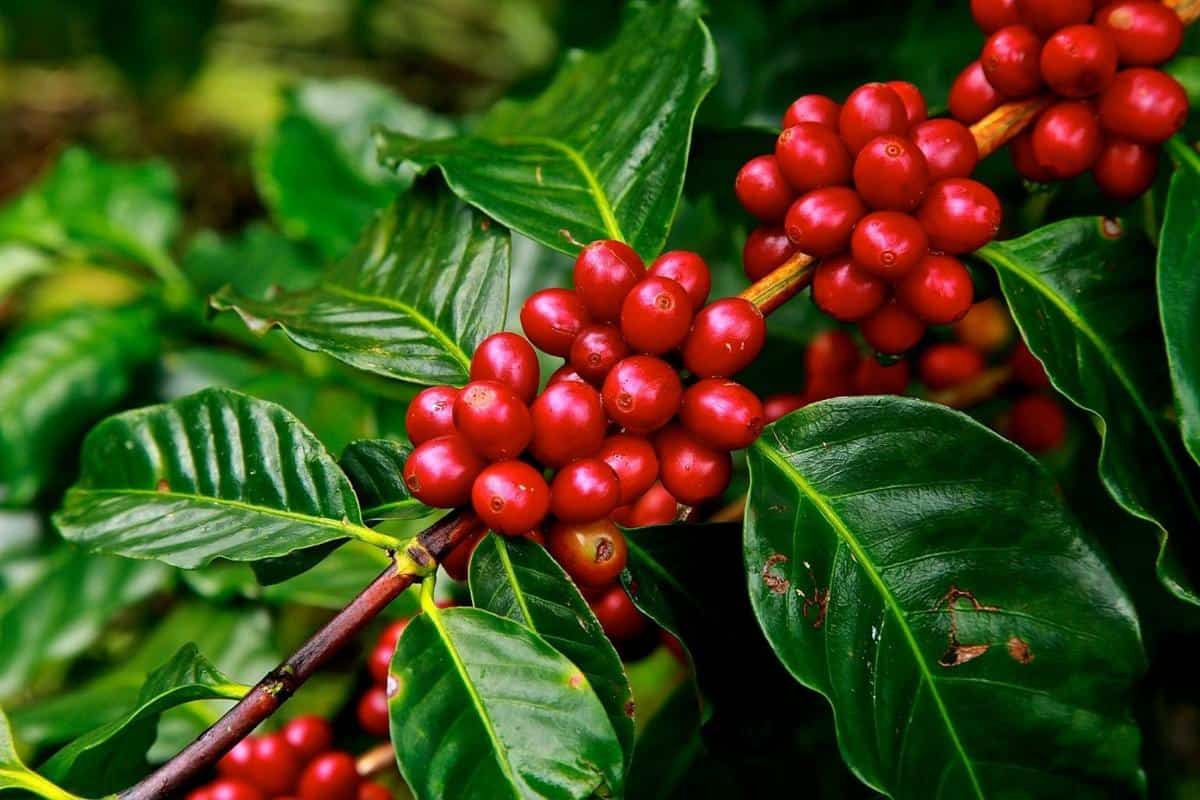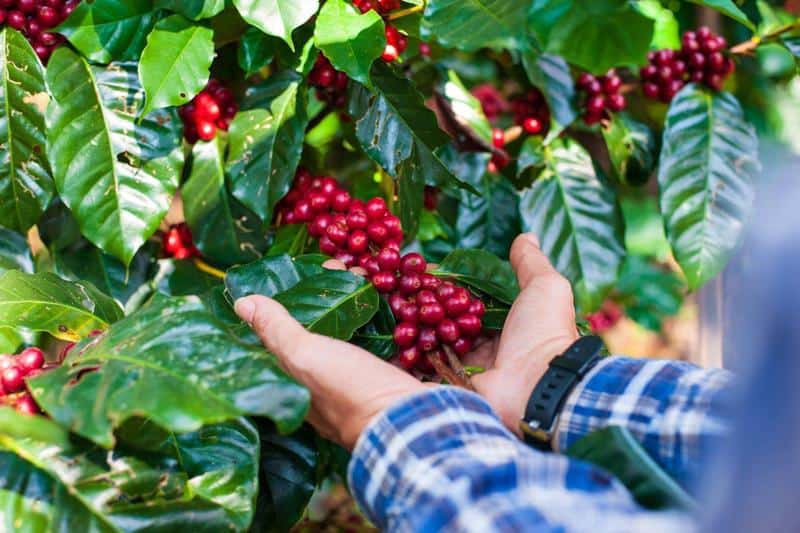Coffee beans, the small brown seeds that give us the beloved beverage known as coffee, have a surprisingly captivating journey from their origins to our cups. As one of the world’s most popular beverages, coffee has a rich and complex history that spans continents and centuries.
This article will dive into the origins of coffee beans, tracing their path through time and across different cultures. From the ancient beginnings in Africa to their introduction in Europe and eventual global spread, we will explore the fascinating journey of coffee beans and the impact they have had on societies around the world.
The story of coffee begins with its rise as a highly sought-after beverage. In today’s world, it is hard to imagine starting the day without a cup of coffee or meeting a friend without sipping on an espresso. But have you ever wondered where this cherished beverage comes from?
Coffee has long held an air of mystery and intrigue when it comes to its origin. The true story behind where coffee beans come from is both fascinating and inspiring. Let us embark on this exploration to uncover the journey of these magical beans.
In this article, we will first delve into the early origins of coffee beans, unearthing historical evidence that leads back centuries. We will then trace their path through Arabia as they conquered hearts and taste buds across the region.
From there, we will explore how they made their way to Europe and eventually arrived in the New World during colonization. Along our journey, we’ll discover the ideal growing conditions found within specific regions known as the “coffee belt” and gain insight into the labor-intensive cultivation process faced by farmers.
Additionally, we will explore how various factors such as climate and soil impact the flavor profile of coffee beans, showcasing their diverse origins and unique tastes from different parts of the world. We’ll also shine a light on ethical concerns surrounding coffee bean production, discussing fair trade initiatives and sustainable farming practices aimed at creating a better industry for all involved.
By the end of this article, it is our hope that readers will gain a greater appreciation for the global journey of coffee beans. From their humble beginnings to becoming an integral part of daily life for millions worldwide, coffee beans carry with them a rich history and cultural significance like no other beverage.
So, grab a cup of your favorite brew, sit back, and join us as we embark on this fascinating journey through time and across continents to discover the story behind where coffee beans come from.
Early Origins
The story of coffee begins in ancient times, shrouded in legends and tales of discovery. According to one popular myth, the origin of coffee can be traced back to Ethiopia, where it was first found by an Ethiopian goat herder named Kaldi. As the story goes, Kaldi noticed that his goats became energized and lively after eating certain berries from a particular tree.
Curious, he decided to try the berries himself and experienced a surge of energy and alertness. Word spread quickly about these magical berries, and thus began the journey of coffee.
While the legend adds a touch of whimsy to coffee’s origins, historical evidence suggests that the cultivation of coffee plants indeed began in ancient Ethiopia and Yemen. Archaeologists have discovered evidence of wild coffee growth in these regions dating as far back as the 9th century. It is believed that local communities realized the potential of these beans and began cultivating them for their stimulating effects.
Coffee soon became an integral part of Ethiopian and Yemeni culture. In Ethiopia, it was initially consumed as a food by grinding roasted coffee beans into a paste-like consistency mixed with animal fat or ghee.
The resulting mixture, known as qahwa or bunna, was consumed for its invigorating properties during long rituals or religious ceremonies. Over time, various methods of preparing and brewing coffee were developed, including traditional Ethiopian practices like pouring boiling water over ground beans contained within a vessel called a jebena.
As trade routes expanded across Arabia in later centuries, so too did the popularity of coffee. The cultural significance of coffee grew immensely in Arab society, with cafes becoming centers for conversation and intellectual exchange. Coffee became known as qahwa al-bun or “wine of Islam,” embodying social rituals akin to sharing wine with friends.
Spread Across Arabia
The spread of coffee across the Arabian Peninsula marked a significant milestone in the journey of coffee beans. It was during this time that coffee transformed from a local curiosity to an integral part of Arabian culture and society.
Arabia played a crucial role in fostering the growth and popularity of coffee. The beans were initially cultivated in Yemen, where it is believed they were first discovered. According to an ancient Ethiopian legend, a goat herder named Kaldi noticed his goats became lively and energized after eating the berries from a certain tree.
Curious about this effect, Kaldi decided to try the berries himself and experienced their stimulating properties. News about these miraculous berries reached Yemen, where farmers began cultivating them.
As coffee gained popularity within Yemen, its consumption gradually spread across the entire Arabian Peninsula. By the 16th century, coffee houses known as qahwa houses became social hubs for gatherings, discussions, and conducting business transactions. These establishments served as meeting places for scholars, poets, politicians, and ordinary individuals seeking conversation and camaraderie.
The cultural significance of coffee in Arabian society also extended beyond social gatherings. Coffee was often served to guests as a symbol of hospitality and friendship. The careful preparation and presentation of Arabic coffee became an art form in itself, with elaborate rituals surrounding its serving. The aromatic brew was traditionally accompanied by dates or other sweet treats to complement its flavor.
| Heading | Data |
|---|---|
| Origin of Coffee Cultivation | Yemen |
| Main Social Hubs for Coffee Consumption | Qahwa houses in Arabia |
| Coffee’s Cultural Symbolism | Hospitality and friendship |
Arrival in Europe
The arrival of coffee beans in Europe marked a significant turning point in the history of this beloved beverage. As European trade routes expanded and explorers set sail to discover new lands, they encountered coffee during their journeys to the Arab world. This encounter would forever change the European palate and give rise to a new culture surrounding coffee.
At first, coffee was seen as an exotic luxury, enjoyed only by the elite classes of society. The first documented interaction between Europe and coffee can be traced back to the 16th century when Venetian merchants brought back small quantities of this mysterious beverage from their travels. These brave entrepreneurs recognized the potential demand for this unique drink, and soon coffeehouses began to emerge across major European cities.
As demand grew, so did the need for a sustainable supply. European powers quickly realized that they needed direct access to coffee-growing regions in order to meet the rising demand for this stimulating drink. In the early 17th century, Dutch traders successfully smuggled live coffee plants from Yemen into their colony on Batavia (now Jakarta), leading to the establishment of Java as one of the first coffee-producing regions outside its native lands.
The Dutch were not alone in their pursuit of securing a steady supply of coffee. Other European powers such as France and England also sought out opportunities to grow and cultivate coffee in their overseas colonies. By establishing plantations in places like Martinique, Haiti, Brazil, and Jamaica, these nations were able to reduce their dependence on Arab merchants and control their own supply chain.
Journey to the Americas
The Journey to the Americas marked a significant turning point in the global proliferation of coffee beans. This section explores the introduction of coffee to the Americas and unveils the pivotal role of colonization in shaping the coffee industry as we know it today.
When did coffee first arrive in the Americas? The journey began in the 17th century when European explorers and colonizers brought coffee plants from Africa and Arabia to their colonies in Central and South America. One notable instance was Gabriel de Clieu, a French naval officer who transported a coffee plant from Paris to Martinique in 1720. This single act set off a chain reaction, with coffee rapidly spreading throughout the American continents.
Colonization played a crucial role in establishing coffee plantations across Latin America. The fertile lands of countries like Brazil, Colombia, and Costa Rica offered ideal conditions for coffee cultivation. The demand for labor on these plantations led to mass migrations and exploitation, particularly through chattel slavery. African slaves were forcibly brought over to work on these plantations, enduring harsh conditions but playing an indispensable role in making the Americas one of the largest producers of coffee globally.
As coffee production expanded across Latin America, so did its economic significance. Coffee became a vital export commodity for many countries, boosting their economies and contributing to their development. Today, Latin America remains one of the most important regions in terms of global coffee production.
| Country | Annual Coffee Production (in metric tons) |
|---|---|
| Brazil | 3,558,000 |
| Colombia | 854,000 |
| Honduras | 749,000 |
| Mexico | 444,000 |
The introduction of coffee to the Americas not only shaped the coffee industry but also had a profound impact on the social and cultural fabric of these regions. Coffee houses became hubs of intellectual and political discourse, fostering revolutionary ideas and movements. In countries like Brazil and Colombia, coffee plantations formed the backbone of the economy, influencing social hierarchies and power dynamics.
As we continue to enjoy our daily cups of coffee today, it is essential to recognize and reflect on the journey that these beans made from their ancient origins to the shores of the Americas. The next section will delve into the conditions that make certain regions ideal for coffee cultivation, revealing how geography plays a vital role in crafting the flavors we savor in our morning brew.
The Coffee Belt
The Coffee Belt, also known as the Bean Belt, encompasses several regions around the world known for their ideal growing conditions for coffee. This section will delve into the geographical areas within the Coffee Belt and explore the crucial factors that make these regions perfect for coffee cultivation.
Geographical Regions of the Coffee Belt
The Coffee Belt stretches roughly between the latitudes of 25 degrees North and 30 degrees South, encircling the equator like a belt. Within this broad region, there are several subregions that are particularly renowned for their coffee production. Some of these include:
- Latin America: Countries such as Brazil, Colombia, Costa Rica, and Mexico are celebrated for their high-quality Arabica coffee beans.
- Africa: Ethiopia, Kenya, Tanzania, and Rwanda are just a few countries in Africa that produce distinctively flavored coffees.
- Southeast Asia: Countries like Indonesia (particularly Sumatra), Vietnam, and Thailand have developed a reputation for producing unique and flavorful Robusta coffee beans.
- Central America: Guatemala, Honduras, Nicaragua, and El Salvador are known for producing well-balanced Arabicas with bright acidity.
The Ideal Growing Conditions
While coffee can grow in various climates and altitudes outside of the Coffee Belt to some extent, it thrives best within its ideal growing conditions found within this region. The key factors that contribute to these favorable conditions include climate, altitude, rainfall patterns, soil quality, and temperature stability.
Coffee plants generally require a tropical climate with temperatures ranging between 60°F (15°C) to 70°F (24°C). They need a stable environment without extreme temperature fluctuations or frost. Additionally, an altitude range of approximately 2,000 to 6,000 feet above sea level is considered optimal for Arabica coffee growth due to its preference for higher elevations.
Adequate rainfall is crucial for coffee cultivation, as these plants require a consistent amount of water throughout the year. The availability of rainfall impacts not only the yield but also the flavor and quality of the beans. Moreover, well-drained soil with a good balance of nutrients is essential for healthy plant growth.
To sum it up, the diverse regions within the Coffee Belt offer coffee farmers the perfect combination of climate, altitude, rainfall, and soil necessary to cultivate high-quality coffee beans with distinct and desirable flavors. This allows for an assortment of unique coffees from different origins to contribute to the wide variety and tastes available to coffee enthusiasts around the world.
Cultivation Process
The cultivation process of coffee beans is a complex and labor-intensive journey that involves several steps before it reaches your cup. From the time the coffee plants are cultivated to the moment the beans are harvested, processed, and roasted, each stage plays a crucial role in bringing out the distinct flavors and aromas that coffee lovers enjoy.
Step 1: Planting and Harvesting
The cultivation process begins with planting coffee seeds or small seedlings in suitable regions within the coffee belt. These regions typically have favorable conditions including a stable climate, altitude, and soil composition.
Once planted, it takes about three to four years for the coffee plant to mature enough to produce cherries that contain the precious coffee beans. The harvesting process involves hand-picking the ripe cherries, which is often done by skilled workers who carefully select only the fully ripe fruits for optimal flavor.
Step 2: Processing
After being harvested, the coffee cherries undergo processing to remove their outer skin and pulp, revealing the inner green coffee beans. There are two main methods of processing: dry processing and wet processing. In dry processing or natural processing, the cherries are laid out under the sun to naturally dry before being hulled to extract the beans. Wet processing involves removing the outer skin and pulp through fermentation or mechanical scrubbing followed by thoroughly washing and drying the beans.
Step 3: Roasting
Once processed, the green coffee beans need to be roasted to unlock their full potential. Roasting is an art form that transforms the raw green beans into aromatic brown ones with distinctive flavors.
During this stage, heat is applied to activate chemical reactions within the beans resulting in caramelization and Maillard reactions that develop their unique taste profiles. The roast levels can vary from light to dark depending on desired flavors, with each level bringing out different characteristics of acidity, body, and bitterness.
Throughout the cultivation process, every step plays a crucial role in determining the final flavor of the coffee beans. From the careful selection of ripe cherries to the meticulous roasting process, coffee farming requires expertise and dedication.
It is important to recognize and appreciate the efforts of coffee farmers who work tirelessly to bring us that perfect cup of coffee. So, the next time you enjoy your morning brew, take a moment to savor not just the taste but also the incredible journey that brought those beans from plantations to your cup.
Varieties and Flavors
Coffee beans come in a wide variety of flavors, each with its own unique taste profile. The diversity in flavor can be attributed to the different origins of coffee beans and the factors that influence their growth. From the high altitudes of South America to the volcanic soils of Africa, every region adds its own distinct characteristics to the coffee beans it produces.
One of the key factors influencing the flavor profile of coffee is climate. Different regions have different climates, which affect the rate at which coffee cherries ripen and develop their flavors. For example, coffee grown in high-altitude regions tends to have a slower maturation process, resulting in a more complex and acidic taste. On the other hand, coffee grown in lower altitude regions may have a milder flavor and lower acidity.
Soil composition is another crucial factor that contributes to the unique tastes found in coffee beans. Volcanic soils, such as those found in regions like Costa Rica or Ethiopia, are rich in minerals that impart a distinct flavor profile to the coffee beans grown there. Additionally, soil acidity plays an important role in shaping the flavor of coffee. Acidic soils produce bright and fruity flavors, while less acidic soils create a more balanced and full-bodied cup of coffee.
Another aspect that influences the flavor of coffee is processing methods. Different countries employ various techniques to remove the outer layers from coffee cherries and extract the seeds within. This process can impact both the flavor and aroma of the final product. Some methods include dry processing (natural), wet processing (washed), or semi-washed processing (honey). Each method results in unique flavors and aromas due to differences in fermentation time and exposure to oxygen during drying.
Ethical Sourcing
In today’s global market, ethical sourcing has become a significant concern for consumers. When it comes to coffee beans, the issue of fair trade and sustainability has gained particular attention. Fair trade initiatives play a crucial role in ensuring that coffee farmers receive fair compensation for their work and are not exploited by middlemen or large corporations. Additionally, sustainable farming practices address the environmental impact of coffee production and strive to protect ecosystems for future generations.
One of the main ethical concerns surrounding coffee bean production is the issue of fair compensation for farmers. In many coffee-producing regions, small-scale farmers are vulnerable to price fluctuations and exploitative trading practices. Fair trade organizations work to eliminate these inequalities by setting minimum price standards for coffee beans. This ensures that farmers receive a fair price for their product, thereby allowing them to improve their livelihoods and invest in their communities.
In addition to fair compensation, sustainable farming practices are essential for the long-term viability of coffee production. Coffee plants thrive in specific environmental conditions, and excessive use of pesticides or fertilizers can harm both the ecosystem and the quality of the beans. Sustainable farming methods include organic certification and shade-grown cultivation, which prioritize biodiversity conservation and reduce water usage.
By supporting fair trade and sustainability in the coffee industry, consumers can contribute to positive change at both the social and environmental levels. Several certifications exist that help identify ethically sourced coffees, such as Fairtrade International or Rainforest Alliance Certified. Choosing these products allows consumers to enjoy their daily cup of coffee while knowing that it was produced with respect for people and the planet.
As awareness grows about the importance of ethical sourcing in coffee bean production, more companies are embracing sustainability as part of their business model. Consumers have also become increasingly conscious of how their choices impact communities around the world. Ultimately, supporting fair trade initiatives and sustainable farming practices is not only crucial for creating a better future for coffee farmers, but it also allows us to enjoy our favorite beverage with a clear conscience.
Conclusion
In conclusion, the article has taken us on a fascinating journey through the history and cultivation of coffee beans. From its ancient beginnings in Africa to its spread across Arabia, Europe, and eventually the Americas, coffee has traveled far and wide to become one of the most beloved beverages in the world.
The exploration of the ideal growing conditions in the coffee belt and the labor-intensive cultivation process has given us a deeper understanding of the challenges faced by farmers. Additionally, we have learned about the diverse origins and unique flavors that can be found in different varieties of coffee beans.
One important aspect that has been highlighted throughout the article is the ethical concerns surrounding coffee bean production. The global demand for coffee puts immense pressure on farmers, leading to issues such as unfair wages and unsustainable farming practices. However, there is hope for a better future through initiatives like fair trade and sustainable farming. By supporting these efforts, we can contribute towards creating a more ethical and sustainable coffee industry.
As we take our final sip from our cup of coffee, it is important to appreciate the rich history and culture embedded in every drop. Coffee has brought people together across continents, influenced societies, and created livelihoods for countless individuals around the world. Whether enjoyed as a daily routine or during special moments of connection with others, each sip of coffee is a reminder of this incredible global journey that began with humble beans from an ancient land.
So next time you indulge in your favorite brew, take a moment to pause and reflect on how far those little beans have come. Appreciate not only their complex flavors but also their legacy that spans centuries. Coffee truly is more than just a beverage – it is an embodiment of human ingenuity, resilience, and cultural exchange.
Frequently Asked Questions
Where do coffee beans originate from?
Coffee beans originate from the Coffea plant, which is native to tropical regions of Africa. The cultivation and consumption of coffee can be traced back to ancient times, with its origin believed to be in Ethiopia.
Legend has it that a goat herder noticed his goats becoming more energetic after consuming the berries from a certain plant, leading him to discover the stimulating effects of coffee.
Where do coffee beans come from to the UK?
Coffee beans come to the UK from various countries around the world. The UK imports coffee beans from major coffee-producing regions such as South America (Brazil, Colombia), Central America (Honduras, Guatemala), East Africa (Ethiopia, Kenya), and Southeast Asia (Vietnam, Indonesia).
Each region has its own unique coffee-growing conditions and flavor profiles, resulting in a diverse range of coffee available in the UK market.
Where does the UK import coffee from?
The UK imports coffee from several countries across the globe. Some of the largest suppliers of coffee to the UK include Brazil, which is known for its high-quality Arabica beans; Colombia, renowned for its balanced and flavorful coffees; Vietnam, a major producer of Robusta beans; and Ethiopia, famous for its distinctively fruity and floral Arabica coffees.
Other significant sources include Honduras, Guatemala, Peru, and Costa Rica.
Where does Starbucks get their coffee?
Starbucks sources their coffee from numerous origins worldwide based on quality and flavor considerations. The company aims to support ethical sourcing practices through their Coffee and Farmer Equity (C.A.F.E.) Practices program.
Starbucks works directly with farmers or through trusted suppliers to ensure sustainability and fair trade practices in their supply chain. They have partnerships with various regions around the world including Latin America (Colombia, Costa Rica), Africa (Ethiopia), Asia-Pacific (Indonesia), and others.
Who first invented coffee?
The exact origins of coffee are uncertain as it dates back centuries ago. However, it is widely believed that the first discovery or cultivation of coffee plants occurred in Ethiopia during ancient times.
The legend of Kaldi, an Ethiopian goatherd who noticed the stimulating effects of coffee after his goats consumed the berries, is often associated with the discovery of coffee. From Ethiopia, knowledge and cultivation of coffee spread to other regions such as Yemen and eventually made its way across the world through trade and colonization.


